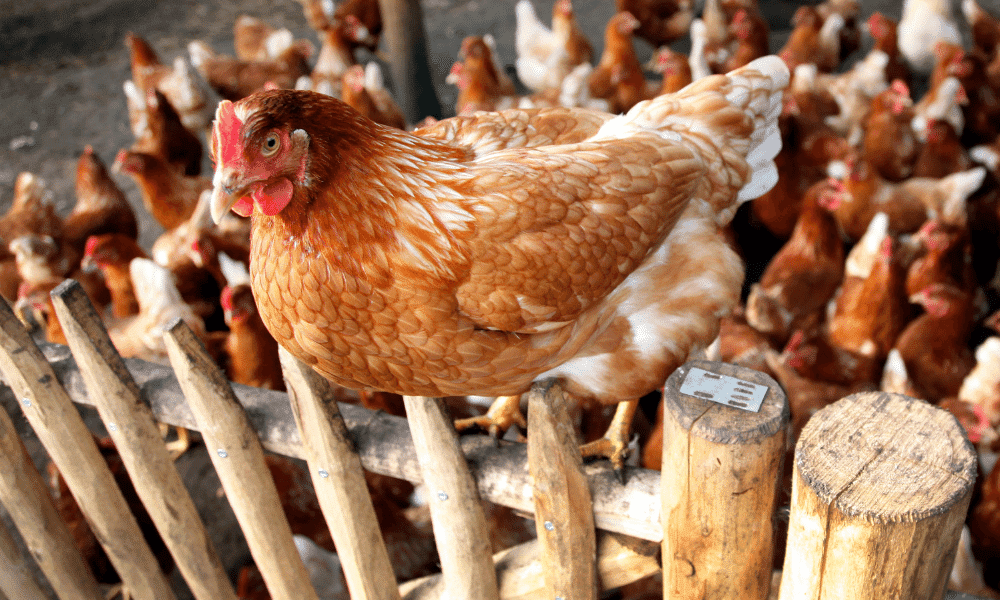Although people say they are one of the easiest farm animals to raise, chickens do come with their own quirky challenges. From dealing with the pecking order, to skittish chickens, to the chickens that lay in funny places, it’s never a dull moment.
One challenge a lot of chicken owners have is keeping their chickens in their yard, particularly if you have an open property and you leave your chickens free-ranging throughout the day.
You know it’s a problem when you sometimes can’t find your chickens or get a complaint from the neighbors!
Here’s why your chickens are leaving your yard and some easy ways to keep your chickens from leaving your yard.
Why Do Chickens Leave Their Yard

Let’s get something clear, not all chickens will leave their yard, particularly if you have an enclosed backyard. Normally the only time chickens will run away when free-ranging is if they are not used to their new environment or if they have been scared away by a potential predator.
But, if you have an open property with open exits through fences or gates your chickens are more likely to go exploring and foraging further.
If your chickens are regularly leaving your yard to your neighboring properties, then they may simply consider the other properties as safe and part of their territory. It’s in these instances that you may want to implement some steps to make sure you can keep your chickens close and safe.
How To Keep Chickens From Leaving Your Yard
If you’ve found that some or all of your chickens are regularly leaving your yard and entering other properties or venturing just a bit far from your liking, there are a few failsafe methods to keep your chickens from leaving your yard.
Each method can work, but it just depends on how much effort you want to put in, and much of the problem this is causing you, your chickens, and your neighbors!
Fencing
The most basic option would be to install a fence around your yard. Chickens can’t fly that high. Bantams will rarely jump or fly above 3-4 feet (like Silkies!), and even the lightest chickens won’t make it higher than about 6 feet high.
Depending on your needs you can simply get some temporary fencing, or construct a permanent fence. Temporary fencing usually isn’t too expensive so it can be a good option if you just want to section off some of your yard for your chickens to free-range in, instead of walling off your entire property.
Chickens normally roam up to about 100 yards up to a maximum of 200 yards from the coop. If you live on an open property chicken wire fencing can help you contain your flock.
Chicken Run

Most chicken owners have a chicken run attached to their coop so that their chickens can leave the coop but still be completely safe in their enclosure.
Although chickens love free-ranging and it’s certainly healthy for them, another option is to limit their free-ranging time in your entire yard, while extending the space in their enclosed run.
You can then let them out to free-range when you can supervise them, but allow them more time in the run to enjoy themselves without the stress of your chickens leaving the yard again!
The size of the run can be determined by the size of your flock. The same can be said for providing adequate space in the chicken coop for your flock too.
For the run, a handsome 10 square feet of run space per bird is more than enough to allow them to experience freedom in an enclosure.
Clipping the Wings
Clipping the wings is a very inexpensive and straightforward procedure. It’s also completely harmless to your chickens, as it’s only cutting off the ends of the wing feathers in order to limit their ability to fly.
This won’t stop your chickens from wandering out of your backyard, but it will prevent them from traversing fences and gates!
Simply trim the long feathers at the wing’s front on one wing. This tiny clipping will throw off their balance, preventing them from jumping too high.
To learn how to clip the wings safely, follow these simple instructions:
- One person should hold the bird, while the other should cut the feathers.
- While holding the bird upside down, fan out the wing.
- Cut the wing’s primary flying feathers. To identify the feathers, look for the 10 feathers closest to the wing’s tip. They’re usually a different color and are longer in length than the rest of the wings. Be aware that there are blood vessels so as not to hurt the hen.
- Once you’ve identified the safe area to cut, start trimming the feathers no shorter than 1 inch from the wing.
You’ll only need to perform this procedure around once to twice a year, as the feathers will grow back when your chickens molt.
If you’re a visual learner, try watching this fully informative video on how to clip your chicken’s wings.
Wrap-Up
Usually, chickens won’t make a habit of straying too far from their home. However, in most cases, if your chickens do leave your yard, it’s likely that they think the further surroundings are part of their territory and feel safe to visit.
So, if you’ve found your chickens regularly leave your backyard and you’re getting a bit concerned, luckily there are some easy ways you can get them to stay within the confines of your property!
Unfortunately, it will take some effort on your part. But constructing a fence or larger run for your chickens will certainly help to contain them. At the end of the day, you do want your chickens to be safe, so it may be time to do some backyard renovations!
